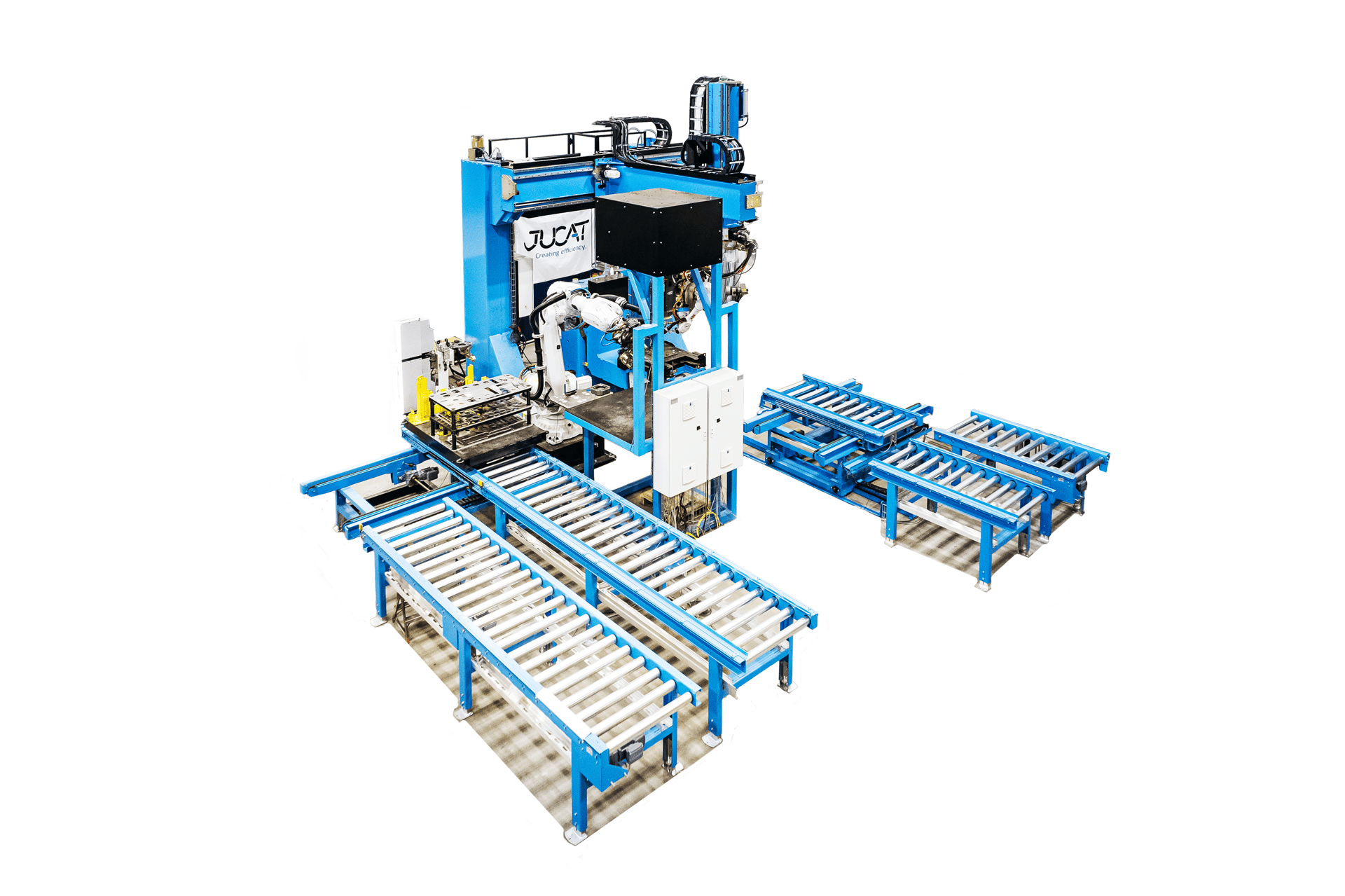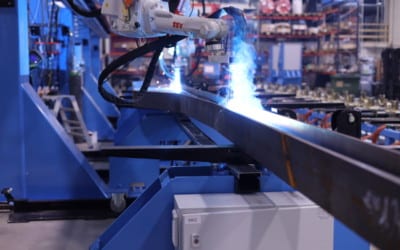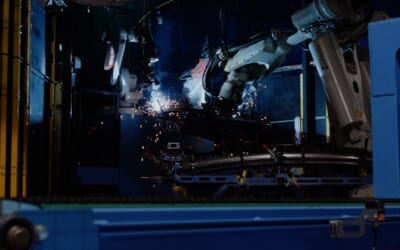Total welding
automation
Automated production has significantly accelerated commercial and industrial development.
An increasing number of companies utilise robots as part of their production processes. Some companies start with simple standard robotic units, whereas some already use automated robot welding portals. All the benefits can be achieved through comprehensive automation of the entire production. Multiple-robot FMS units enable running the production overnight without the need for manual monitoring, enabling multiplied production efficiency and substantially improved lead times. A robotic unit consists of one or more welding and workpiece positioning robots as well as various FMS conveyors and additional equipment that provide remarkable improvements to product quality, production efficiency and employee expertise.

Substantially increased production efficiency
Properties
Automatic welding torch swap
More than one welding head can be used in a single process. The robot automatically swaps the tool, choosing from (usually) up to six alternative heads.
Laser seam finding and laser seam tracking
Laser seam finding effectively identifies the starting points, interim points and end points of welds. Laser seam tracking follows the joint precisely even in the presence of deviations and enables filling the joint also when the volume is altered.
Computer vision
Computer vision enables identifying workpieces and weldable surfaces, positioning the product, correcting the robot’s orientation, inspecting the product’s measures and monitoring quality.
Mobile robot
A mobile robot transports the finished product form the automated robotic unit to a desired workstation in the production line.
FMS conveyor
FMS conveyors handle the material flows and logistics of an automated robotic unit.
FMS storage
The FMS storage stores the materials, tools, fasteners and finished products used or processed by the automated robotic unit. It handles the unit’s logistics and material flows with the FMS conveyors.
Unit interface
The unit interface facilitates the daily operation of the unit. Visual solutions and illustrative functions ensure user-friendly, guided use of the system. The interface also enables combining various functions easily.
Workpiece positioning robot
The workpiece positioning robot serves the welding robot in the automated robotic unit. It picks up workpieces from the FMS conveyor and places them in the fastener so that they can be welded. This enables automating and robotising the entire process, eliminating the need for manual work.
Welding automation in practise
Multiple-robot units consist of one or more welding and workpiece positioning robots as well as various FMS conveyors that take care of material logistics. These can also be assisted by computer vision and laser tracking and/or scanning systems. Laser scanning swiftly identifies various materials and starting positions, after which tracking makes the necessary corrections in real-time. This ensures that the welding outcome is always of the best quality possible. If the welding unit is equipped with two robots, one for welding and one for handling workpieces, computer vision ensures that the workpieces are always positioned correctly.
Such units are fully automatic. The product palette is placed on the FMS conveyor that is automatically attached to the robot’s table. The materials palette assembled at the storage or by the supplier is also placed on the conveyor from which the workpiece positioning robot picks up the pieces one at a time and places them on the product palette. The welding robot trims or welds the workpieces based on an automatic job queue or the pieces’ RFID codes, after which the FMS conveyor carries them out of the unit.



